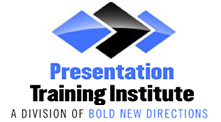Quotations can be a powerful way to add credibility, authority, and impact to your presentation. Many people choose quotes attributed to famous people, because they strike a chord with the audience and add meaning to thoughts and ideas. A thoughtfully selected quote can carry weight with the audience by inspiring them and making your presentation more memorable. Here are a few tips on how to use quotations effectively in your presentation.
1. Choose a relevant and impactful quote.
When choosing a quotation for your presentation, make sure it is relevant to your topic and supports your key points. Choose quotes that are thought-provoking and meaningful, as to better resonate with your audience. Furthermore, selecting quotes from a famous person can add credibility to your presentation, offering a well-known figure who is echoing your claim.
2. Introduce the quote.
Tell your audience the name of the person being quoted and possibly some additional relevant information about that person. Explain who the author is and why their words are significant. This will let the audience know why this person is an expert in the field, adding credibility to your presentation.
3. Use quotes to support your arguments.
The primary reason for using quotes is to reinforce your ideas. A quotation offers words of wisdom from a credible and well-respected source that backs up your claims. This is an effective and persuasive way to support your main talking points.
4. Keep quotes concise and simple.
Quotes should be simple and include only concise, memorable phrasing. After all, that is why quotes get remembered in the first place. Avoid long, verbose quotes that might confuse your audience. Rather, choose quotes that are short, powerful, and impactful.
5. Use quotes to add variety.
Quotations can be a great way to spice up your presentation with a little variety. Rather than spitting out facts, data, and statistics that might bore your audience, quotes are more interesting and can add a dramatic effect. Depending on the quote you choose, you can create anticipation, suspense, drama, or humor.
6. Reflect on your quotes.
After sharing a quote, take a moment to reflect on its significance and relate it to your own insights. Explain how the quote has impacted your way of thinking and how it can deepen the audience’s understanding of your message. This will help make the quote more meaningful to the audience.
